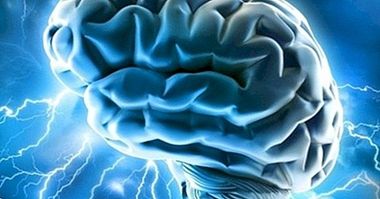The theory of the moral disconnection of Albert Bandura
If we think of historical moments such as the Second World War, it is possible to reflect on how it is possible for so many soldiers and citizens to have certain qualifying behaviors such as war crimes and crimes against humanity, such as those carried out in the concentration camps. . The same doubt may arise in contexts such as intimate partner violence or gender violence, or in less dramatic contexts such as those who commit robbery or fraud. And we do not need to move in areas of illegality: we can also ask for example how it is possible that people who value fidelity above all things can become unfaithful.
There are many attempts to explain how people who generally would not or should carry out these and other behaviors for being against their principles have come to realize them. One of the proposed theories is lto Bandura's moral disconnection theory , which we will review briefly in this article.
- Related article: "Albert Bandura's Theory of Social Learning"
The theory of moral disconnection: basic principles
The theory of the moral disconnection of Bandura proposes that during our evolution and development, behavior is being socially reinforced or punished through the application of different procedures, a regulation that with the passage of time we internalize through socialization . Little by little, we are acquiring and developing a sense of ethics and morals, regulating our behavior based on the values that are established in our way of being. Thus, we tend to behave in a manner consistent with the rules of behavior we have internalized, self-regulating.
However, sometimes it is possible for people to carry out acts contrary to said internalized values and norms (for convenience, conformism or survival among other possible reasons), something that usually usually causes a dissonance between our doing and our think. This will generate an increase in internal tension and emergence of subjective discomfort in front of one's performance, when a moral conflict appears .
In these cases, and especially when the transgression involves a strong break with our beliefs and values, It is common for Bandura to call selective moral disconnection , using different defensive mechanisms that allow to try to legitimize the own acts despite going against their moral system, deactivating self-regulation and moral censorship until these elements become irrelevant and justifiable for the person.
This disconnection occurs progressively, so that little by little they leave accepting more and more behaviors that at first would be considered unacceptable, absurd, cruel or even criminals. Thus, the self-concept is protected and the usual self-regulation process does not appear as different defensive mechanisms are applied.
This theory starts from the conception that the interaction between behavior and thought are deeply influenced by environmental, personal and behavioral factors, being moral also affected by the influence of cognition, emotion and social interactions. Bandura's theory of moral disconnection, as we have seen in the introduction, is applicable in all kinds of situations: from the simplest or trivial to great war crimes . Obviously, the greater the severity of the split between conduct and moral greater difficulty to be used and the greater need for the intense application of defensive mechanisms that prevent the destruction of self and self-concept.
- You may be interested: "The theory of moral development of Lawrence Kohlberg"
Four main levels
The theory of moral disconnection proposes that this disconnection can occur in different domains or levels, depending on where it is located or the aspect that the mechanisms used in themselves work. In this way, we can find four large domains.
1. Locus of conduct
This domain refers to the set of processes in which the element on which the modification is carried out is the conduct in question . The acts are reinterpreted through different mechanisms, reducing the severity of these.
2. Locus of action
In this case, the point at which the subject introduces modifications in order to reduce the cognitive distortion generated by their actions is his own level of personal responsibility perceived by him , reducing this based on concrete mechanisms.
3. Result locus
The main turning point in the result locus is, precisely, the results of the action. It's based on reduce the importance and seriousness of the facts and their consequences, or ignore them .
4. Locus of the receiver of actions
Here the goal or mechanism to avoid discomfort is to seek an explanation of the behavior from the victim or receiver of immoral acts. Mainly is based on blaming the other or reducing their value as a human being .
Defensive mechanisms
The theory of the moral disconnection of Bandura proposes that the human being uses different mechanisms of cognitive type to justify his conduct when this is against his moral and ethical principles. Specifically, eight major mechanisms are proposed, these being the following.
1. Moral justification
Defensive mechanism of the moral disconnection in which the conduct carried out and contrary to the values and beliefs of the subject is defended as a means used to achieve a worthy and superior purpose, which justifies the acts committed. Reality is reinterpreted in a positive way in such a way that the immoral act becomes actually commendable in the eyes of its perpetrator . It is one of the mechanisms that would be placed in the domain of the locus of conduct, and its presence in the military sphere and in terrorism is common. It is characteristic of the locus of behavior.
2. Euphemistic language
Modality of defensive mechanism in which the intensity and severity of immoral behavior is reduced or distorted through language , expressing itself in such a way that it loses its harmful character. In other words, put neutral names to immoral actions. It is also part of the locus of behavior.
3. Displacement of responsibility
A mechanism widely used today, it is about attributing all or a large part of the responsibility of the acts themselves to other people or situations . In many occasions this person has a certain position of superiority with respect to the subject. The chance, the moment and the place or another subject can serve as an element to which to displace the responsibility of the acts.
It is typically used in the workplace, but also in other more dramatic situations. A phrase that would summarize part of this concept is "just follow orders". It is based on attributing blame to others, something that would place it as a mechanism typical of the locus of action.
- Maybe you're interested: "Gaslighting: the most subtle emotional abuse"
4. Dissemination of responsibility
Similar to the previous mechanism, which in this case, instead of being attributed to a single person, assumes a slight part of guilt, at the same time that it spreads and is disseminated by all the members of a group or collective. In this way, individual responsibility is attenuated by sharing guilt among all , or directly disappears. Part of the locus of action, in which the culpability of the facts is interpreted and reassigned.
5. Minimization of consequences
Defensive mechanism focused on considering that the consequences of amoral actions are less serious than they really are. This supposes to distort or consider false or exaggerated for the purposes of the conduct carried out. "It will not be that bad". The domain that this mechanism would be part of is the result locus.
6. Advantageous comparison
Mainly, this defensive mechanism involves making comparisons between one's behavior and one considered much worse, in such a way that by comparison the first does not seem so serious . The typical expression "... but I have not killed anyone" would be a simple example of such a comparison. It is also common to use as an excuse to perform the immoral act the fact that another or others have done something worse. Own locus of behavior, by reinterpreting the facts based on that comparison.
7. Dehumanization
Defensive mechanism used generally before the guilt before the consequences of the own actions for other people, being these actions generally of a great gravity. It is based on subtracting humanity from those affected, reducing consideration to them as beings and diminishing their lives. This produces a decrease in the level of empathy for them, facilitating the reduction or even eliminating the feeling of discomfort associated with the damage caused. Many acts of war and crimes are justified by this means, being the mechanism used based on the locus of the receiver of the actions.
8. Attribution of guilt
Similar to the displacement of responsibility and dehumanization, it is based on making the victim the main responsible for the subject having committed the amoral act. "It would be looking for / I was provoking" is a typical phrase that summarizes this mechanism. The behavior itself is seen as a normal reaction, derived or attenuated by the situation and the consideration that the other deserved such treatment . Bad treatment and violations are some of the contexts in which this mechanism has been used, typical of the locus of the receiver of actions.
Bibliographic references
- Bandura, A. (1999). Moral disengagement in the perpetration of inhumanities. Personality and Social Psychology Review, 3 (3), 193-209.
- Bandura, A. (2006). Mechanisms of moral disengagement in support of military force. The impact of Sep. 11. Journal of Social and Clinical Psychology, 25 (2), 141-165.
- Rubio, F. (2016). Moral disconnection and violence in the courtship of adolescents and young people. Doctoral thesis. UNED.
- Obermann, M. L. (2011).Moral disengagement in self-reported and peer-nominated school bullying. Aggressive Behavior, 37, 133-144.



















